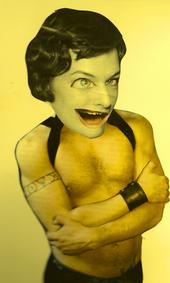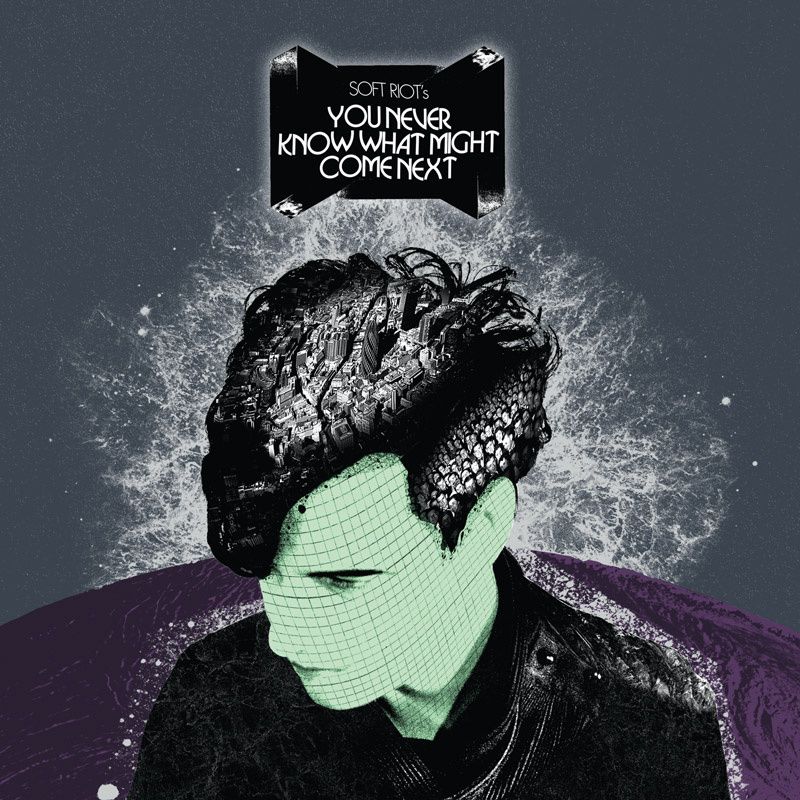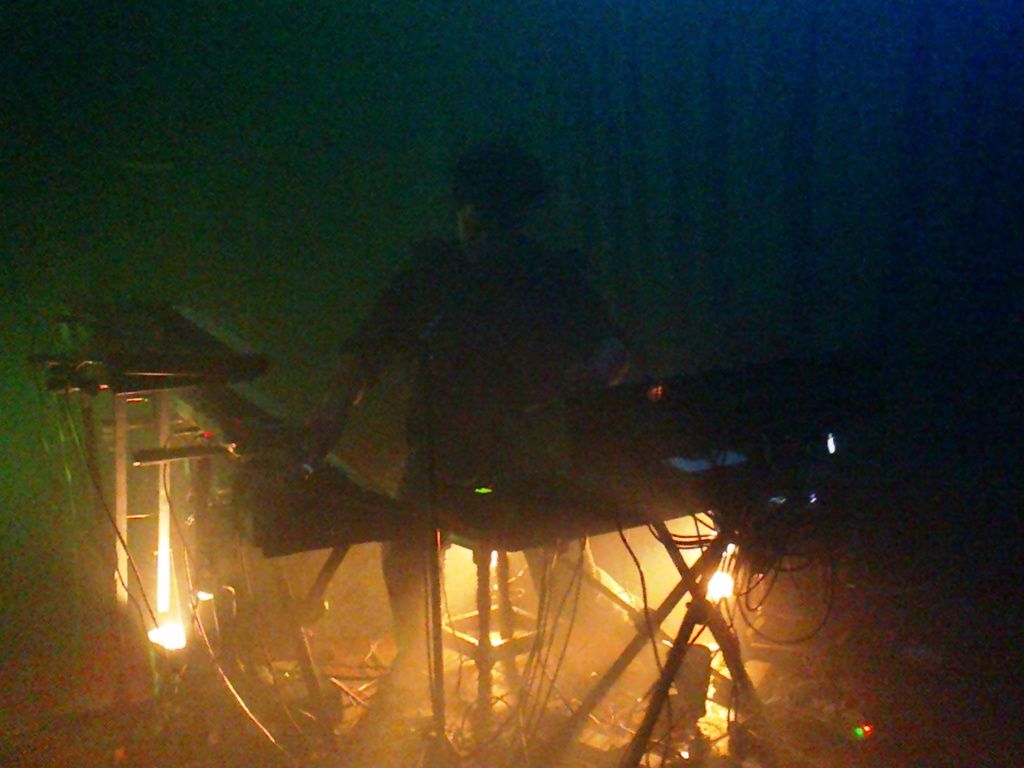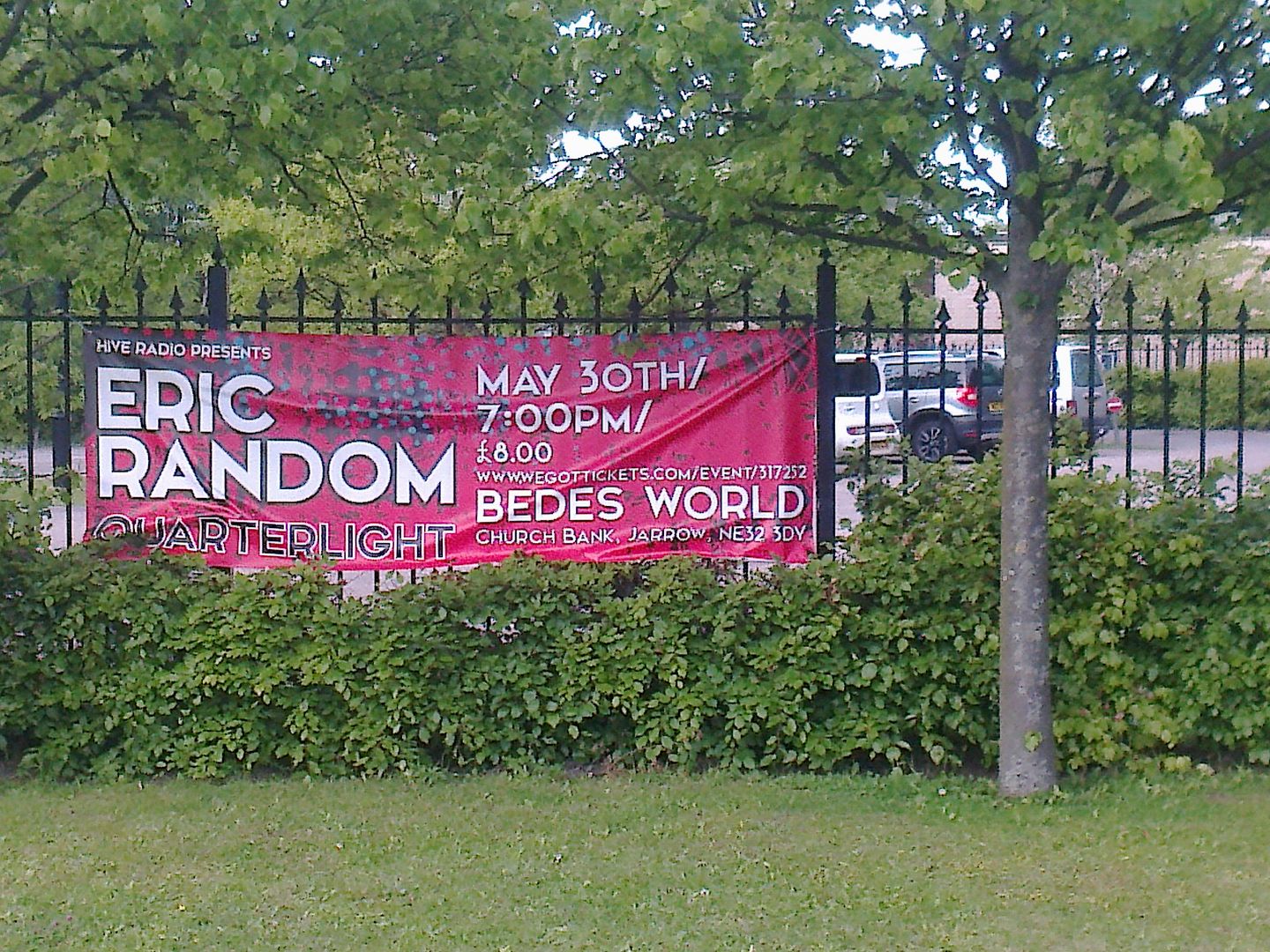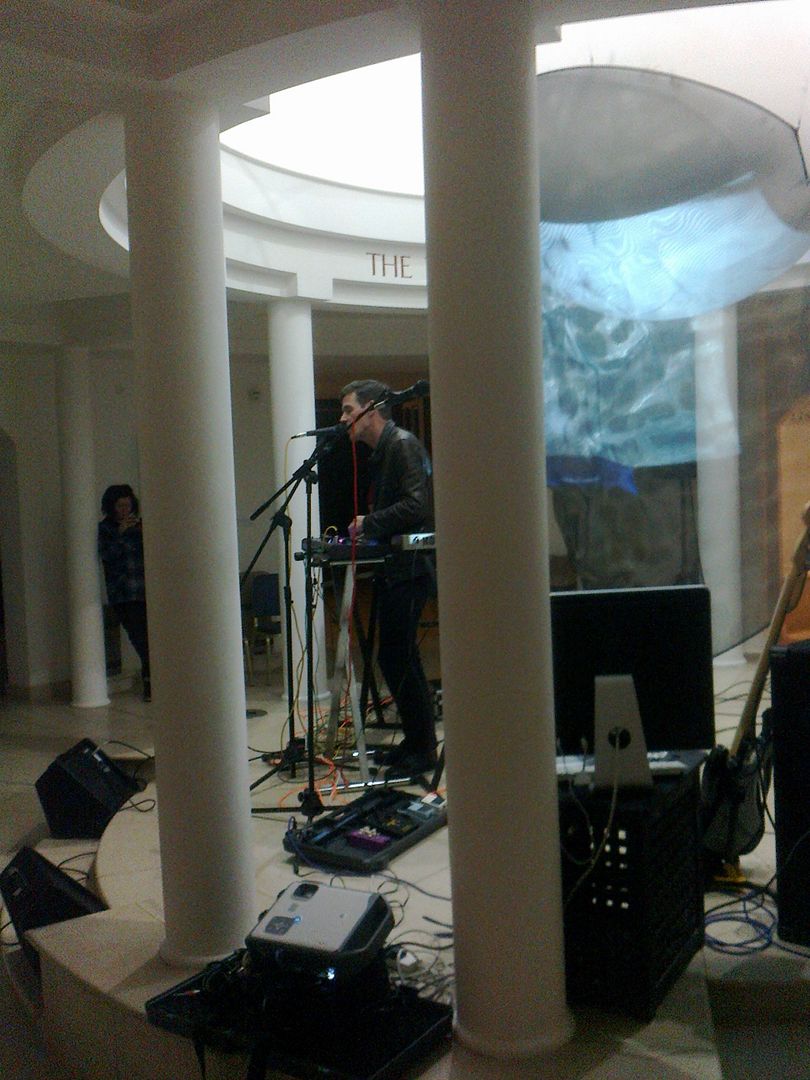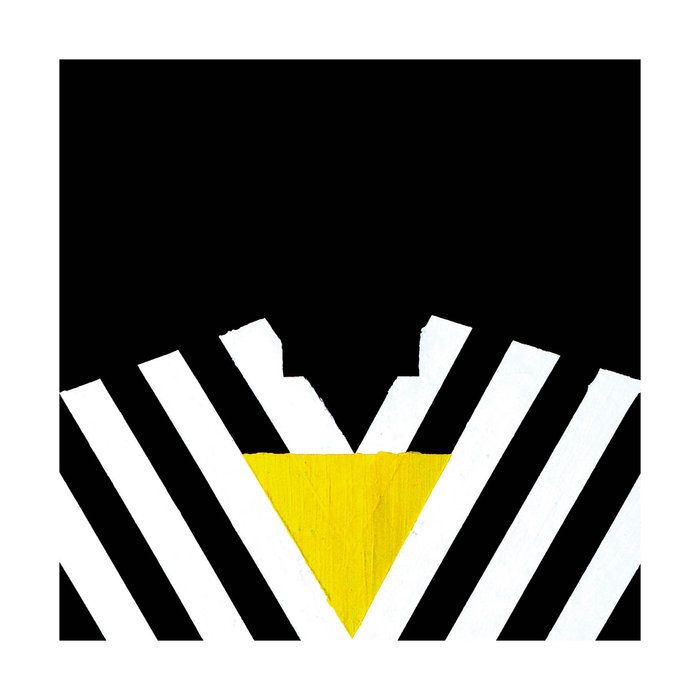
Anyone reading diligently almost two years ago today will be familiar
with the name of Ivan Antunovic, as I reviewed Issue V of his impeccable,
inspiring and highly informative fanzine “Small Doses” back in November 2013.
As I mentioned then, his energies are not just confined to the printed page but
also musical endeavours, too, both in the form of his 0.5 imprint, which
currently has forty-two releases by a host of artists listed on its Discogs
page, and as a shape and guise-shifting musician himself who has clocked up
countless releases over the last six years or so under names such as I/II,
Iv/An, Split Personalities, Dissident and The Fall Guy. The list seems set to
grow further, no doubt, as the man’s enthusiasm, bank of ideas and work ethic
seem to know no bounds.
This November, though, has seen the release of one of his most ambitious
projects thus far, “Crossovers”, a twenty-one track international compilation
spread across two discs, a diverse yet unified collection of artists who huddle
together, some more loosely than others, under the electronic / experimental
umbrella, with the timely themes of migration, borders, communication and
collaboration being at the heart of its ethos, and hence the title. As with
anything Ivan produces, style and substance of the very highest order go
hand-in-hand and, in this respect, “Crossovers”, in its multi-coloured sleeve
which folds out to form a kind of triptych, or a book that works in two
directions, one for each disc, is an absolute triumph of both aesthetics and
function.


The whole package is helped along by Philipp Hanich’s oil painting “I
Lost My Heart To Varvara(2012) gracing one of the faces of the booklet, an
arrestingly simple yet optically stimulating image which, whilst directly referencing
the 1920s sportswear designs of Varvara Stepanova, also brings to mind Giacomo
Balla’s Futurist Suit and the cabaret costumes of Tristan Tzara, all of which are
highly apposite for an international collection with avant-garde leanings, such
as the one we have here. A hand-numbered insert, for this is available only in
a small dose of seventy copies rather than an unlimited supply, also features
another of his works, “Bruch”, a mixed media piece from 2012, which shares its
title with the nom de guerre under which he releases his solo musical outings,
for he, too, I believe, is a polymath, a shape-shifter and collaborator,
perfectly suited to this particular environment. Then, finally, before we get on
to the audio content, Michael Giebl has to be mentioned as occupying a central
position in proceedings, much as he appears to hold a pivotal, hub position in
the seemingly thriving Viennese underground electronic music scene derzeit, his
witty, thought-provoking liner notes and, I understand, ideas and encouragement
during its inception and production also stamping his identity across the
finished release.
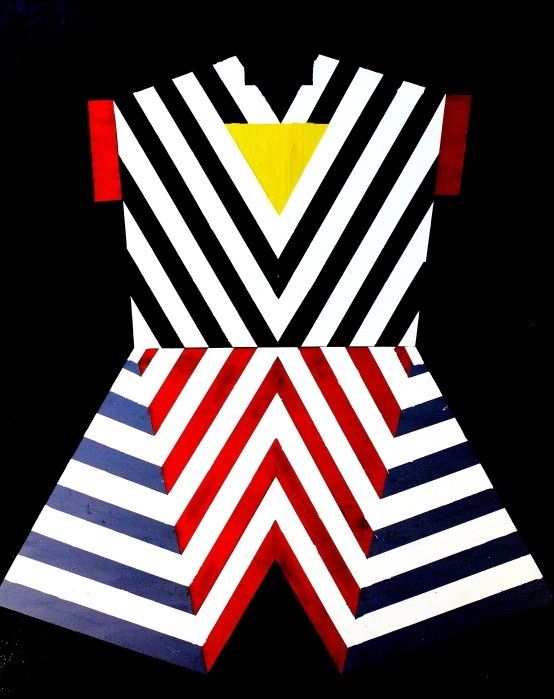
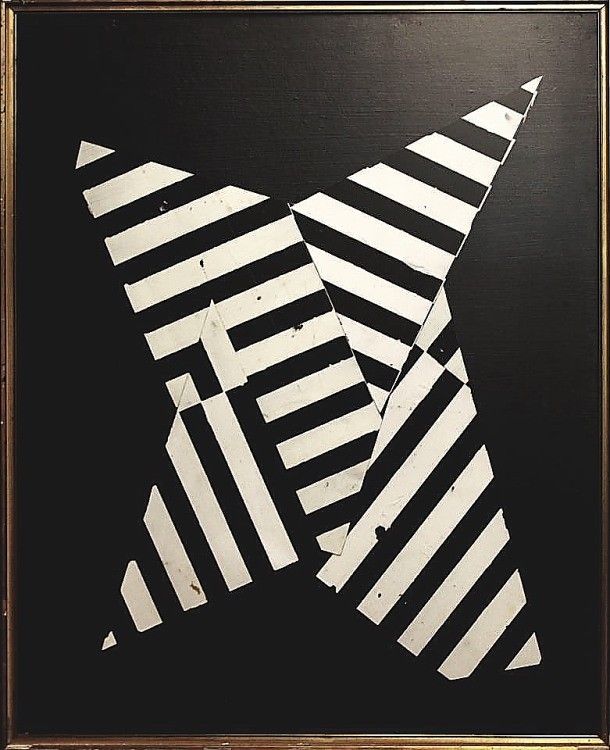
So, now to Disc 1, which begins rather atmospherically with “Guess Who Is Here” by Insane Eyes, which is a steadily
advancing instrumental, previously released on a 2012 album originating from
Serbia. Both stately and ominous in equal measure, the sound reminds me a
little of the palette employed at times by Depeche Mode during the mid-eighties
but augmented by some haunting, not quite comprehensible vocals, like a kind of
irrepressible entity progressing determinedly through the night, an image and
sound over which the opening credits of some mysterious, suspenseful film could
convincingly roll. In this respect, Michael Giebl’s sleeve notes echo my own sentiments
entirely, as he describes it as “an eerie, orchestrated tune of Murnauesque
fright-quality, taking us back to the early days of the magical medium of
cinematography.” It’s certainly a perfect attention-grabbing opener for what’s
to follow.
Which begins with “Kaffeetrinkengehen”
by The Vague Faith, effectively
another instrumental piece, which now brings some highly infectious, gently
building electronic jitter-funk to the table, over which fragmented,
conversational mutters do battle with occasional whistles of electronic
feedback, evoking impressions of the social activity after which it is titled.
This is an otherwise unreleased solo offering by David-Kim-Hermsdorf who is
from Hamburg, hence the reference to Holger Hiller and Felix Kubin meeting for
coffee in a bygone era prior to electronic communication in Michael’s liner
appraisal. My only criticism is that it is frustratingly short at just two
minutes and forty seconds. I’m left wanting another cup.
By contrast, Bildplatte who come next with “Hollow Day” definitely mean business
in the song stakes, their foot-tapping, slightly warmer than ice-cold wave,
repetitively sequenced groove, which also comes served with what sounds like
bass, guitar and real drumming, proving to be an infectiously addictive early
highlight of the compilation. The group combine something of the electronic
urgency of DAF and their ilk, with traces of an early recording by The Cure,
over the top of which an intensely arresting vocal element is provided by
guesting voice Violet Candide whose delivery brings to mind Yoko Ono in its
disregard for convention and seeming desperation to let those feelings out.
Unless my hearing is failing me, love is like a cactus. This is the first of
the Vienna contingent whose presence is so strongly felt across both discs.
Next, though, we’re back in the realm of the atmospheric instrumental
with Cornelius Berkowitz’s
“Lichtspielmusik” which, for me, on a first listen, began with the
invisible drones and sirens of approaching bombers and duelling fighter planes,
flashing across searchlights in the blackness of night, this combining with the
title to maybe suggest something redolent of Albert Speer and “Triumph of the
Will”, too. However, a little short of the two minute mark, everything changes
and a kind of restrained minimal surf track which won’t quite let rip cuts in,
a little like the hybrid offspring of Die Haut and Young Marble Giants. This is
only temporary, though, as progressively rising, spooky sublayers soon win out,
combining powerfully with some quite heavy and, at times, discordant profundity
at the piano, therein belying the piece’s true intent as an extract from a
soundtrack to be performed live to Carl Dreyer’s 1932 film “Vampyr”. With this
in mind, we’re then perfectly positioned in the terror zone, a poetic nightmare
of classical proportions with piano, theremin, strings and guitar being just
some of the startling ingredients which blow around in a beautifully unsettling
maelstrom by the time the piece passes the four and a half minute mark.
Combined with the aforementioned visual element, this must make for quite an
amazing multi-sensory experience. I’ve managed to find a video clip of this very
phenomena, filmed in Vienna, one year ago almost to the day, this being the
city out of which Cornelius Berkowitz works, I believe. Here's the link.
“Nightmare Carpet”, which follows,
appears to be both the title of the song and the name of the artist and
originates from a self-released cassette, date of conception unknown, although
geographically it, apparently, comes from the city of Belgrade. The medium here
is minimal, repetitive and darkly atmospheric, suggesting a feeling of being in
a dank, subterranean cellar, perhaps, yet also possessed of subtle arabesques
which circle and coil out of the mix and combine with a simple, recurring and
haunting melody to provide a certain exoticism to the track which, for me, is a
little reminiscent of an early Cabaret Voltaire piece. I like how Michael Giebl
sums it all up so I’ll quote him verbatim before moving on: “Music to play in
the dark. When you’re alone. Lying on a medieval rug. This audio piece is woven
out of a nightmare of some unknown dreamer.”
Zastranienie also come from the Serbian capital and their
contribution “Ritual” unleashes its energy
with immediate force, such that any ambient abstractions left lingering from
the previous two pieces are blown instantly off the field by a fierce whip crack
of a beat, powerful sequenced electronics, which have something of the slightly
off-kilter stridency of Liaisons Dangereuses, and a vocal element which makes
me think that this would make an ideal soundtrack for a 21st century
remake of “The Omen”. It’s apparently plucked from the sessions for an, as yet,
unreleased album and, undoubtedly, has the makings of a floor filler at your
local EBM discotheque any day soon.
My goodness, we switch territories most
deliciously on this disc, as Kimekai whose
“Sunland”, which follows, goes in for something a lot less intense, more
light-infused and pop-inclined, the song’s title going a long way to describe
the sonic components on offer. Synths shimmer and glisten and there’s a watery,
natural element to it on which all the other ingredients, both dreamy and alert
at once, seem to float downstream in a glow of absolute well-being. It has
something of the positivity, hyper-magnification and brilliance I get from
parts of Pyrolator’s “Wunderland” album, although sounding only slightly like
it, whilst there is also something of the tranquil perfection of a Japanese zen
garden to it, as well. Kimekai is the work of a twenty-two year old Croatian
producer by the name of Marko Vuković, my research tells me.
With “Azinth”
by Farbfelde, we’re back in the
realms of the contemplative and abstract, again, the name of the artist going a
long way towards describing what it represents, as increasingly intensifying
tones of sound wash over and around one another or pulse repeatedly and
reassuringly from a foundation depth, almost as though a painting by Mark
Rothko or Barnett Newman has been temporarily granted a sonic dimension with
which to express itself. Fans of people like Spectrum or Land Observations will
find a lot to enjoy in this one and it is a very nice place, indeed, in which
to find oneself located for just over four and a half minutes, a mandarine
Traum. Their Soundcloud page describes them as Berlin School Kosmische Musik
from Vienna, unsurprisingly.
Now comes the first of a small British
contingent on the compilation, as “We’ll
Kill Your Reason” by This is the Bridge,
which originally appeared on a digital album called “Blood Runs Cold”, released
earlier this year, is described as both a solo and collaborative project from
Liverpool and London. It also marks the first sonic contribution on offer by
Ivan Antunovic, too, as the track appears here in the form of a “Protest Mix”
credited to Iv/An. In so doing, it makes me think of what Vice Versa might have
sounded like were they still around today rather than changing direction so
radically three and a half decades ago. The timbre is strictly electronic,
metallically and acidically so, I would say, their combined intentions
seemingly straddling both avant-garde leanings and a pop structure and
sensibility. I love it, as it also takes me back a little to the livelier
aspects of Fad Gadget’s “Under The Flag” album, both in the tones with which it
is painted and the insistent groove which propels it along.
The first disc then closes with an old friend, Soft Riot, who appears here with a “First Version” of “You Never Know What Might Come Next” from the album of the same title, which I reviewed ever so recently below so I won’t say anything more about it here, except that it sits perfectly in this context and is another of the many highlights herein to be found.
Disc 2 kicks off with “Work and Velocity” by Crystal
Soda Cream, who are a trio, Philipp Forthuber, Theresa Adamski and Sebastian Ploier, and one of an impressive roster of artists clustered around
the Totally Wired label in Vienna. They released their debut album proper in
2013, although this track is a remixed version of one which will appear on the
follow-up, which is still forthcoming and, in it, although electronic elements
feature, guitars dominate, sounding very familiar, as though from a dawn of the
eighties Banshees album or the Cocteau Twins’ “Head Over Heals”. The vocals are
male, though, and sound similar to Robert Smith to these ears, both in terms of
the voice itself and the rhythm of the delivery.
Next
it’s the turn of Nöi Kabát with “Industry”, this being one of the sides
of their debut and, to date, only vinyl release from a couple of years ago (see
my entry from October 2013 for more details), although here it’s in the form of
a subsequent “Sense and Understanding” remix by In Death It Ends. To this particular
end, it’s been raved-up quite considerably and given that unmistakable Northern
European sound which is both martial and commanding on the one-hand but
achingly melancholy and cold on the other. Picture one of those old factories
in Germany which get reappropriated as nightclubs for a while, until the
authorities or real estate companies move in with a more bland, bourgeois
agenda, blue and white lighting, swathes of dry ice, a metallic interior and
several hundred revellers and you’ll probably get where I’m coming from. It’s
brilliant! Rumour has it that this is an apéritif for something more substantial
just round the corner, but I’m not one to gossip so shall say no more under
these circumstances.
As we have come to expect from this compilation,
“Kapusta” by Mo-Du then changes the mood most dramatically, back to something
more serene and microscopic, after the gargantuan, stentorian statement which
precedes it. This is the work of Jan Jiskra from Prague, who normally trades
under the name of Moduretik and has been making music he describes as
synthwave, minimal synth, darkwave and ambient since 2001. “Kapusta”, without a
doubt, fits into the latter category and is described by Michael as an
“otherworldly audio guide to outer space” and there is certainly a sense of
floating freely or being propelled gently through something anti-gravitational
when you listen to this one.
The gentle respite doesn’t last long, however,
as Laker Herzog instantly reset the pace and intensity dials a
few notches with their track “Driven To
Silence”. Apparently, they use analogue equipment to make bedroom synthpop
in Argentina, and sound very European in so doing, maybe because Iv/An is back
at the mixing desk, having given this one a makeover in Zagreb prior to its
inclusion here. As a consequence, it definitely would not sound out of place on
one of those minimal / synth / wave compilations which have become increasingly
popular over the years, and is rather typical of a genre which owes rather a
lot to the likes of early Depeche Mode and their ilk. This is no bad thing,
though, and I love it, especially the stinging beat, which sounds like
electrowhips or gobbets of acid rain lashing against a window pane. Without a
doubt, it’s one of the compilation’s poppier moments yet is still possessed of
an uneasy tension which is a common, unifying thread running through many of
the tracks on offer.
"Homage à F" by 1410,
which follows, is another more atmospheric soundscape piece, an unreleased
track by Mladen Đikić, who more normally records under the name NoName NoFame.
He’s from Split in Croatia and the influence of his coastal location is
possibly in evidence here, as there’s a sense of contemplating something quite expansive
and unending when listening to this one. There’s not a beat to be heard, just bands
of layered sound, some metallic and fizzling, others more expansive and filmic,
like the soundtrack to some light-saturated, semi-abstract super 8 in which
vague elements turn slowly in bright, glistening sunshine.
Microslav’s contribution, “Labin” occupies similar territory to 1410 and is, by far, the longest
piece in the set at just over 10 minutes. In fact, even at that, it’s only a
one-track recording excerpted from a longer live improvisation. His Soundcloud
page describes him as a man with a computer and, in the liner notes for this
compilation, Michael Giebl expands on this when describing the track as
follows: “Modular analogue sequences from the synthesizer maniac of Zagreb who
supposedly provides electronic equipment from his enormous collection to all
the kids who fancy twisting some nobs.” I’m guessing that quite a number of
prime examples from his arsenal got dusted down for this gently-building,
multi-toned instrumental which has something miraculously evolutionary about
it, whilst also putting me in mind of the intricate diligence going on inside a
colony of insects. Like the toxic bite from just such a creature, it gets under
your skin and gradually begins to seep into something hypnotic and slightly
destabilising. I would guess that some people would describe it as noodling
and, certainly, were the piece played on guitars I’m sure that it would be most
revolting. However, here it works beautifully.
After
a short intermission, sequenced rhythms, a succession of bleeps which pass by with
the relentless rapidity of an express train, hissing beats and electric
handclaps run amok in Position A’s “In Your
House”. It’s squelchy and acidic and has a vocal
element, too, slightly vacant and providing variations of phrases centred on
the key concept of the title. Aside from this, Position A is a bit of a
mystery. The track was recorded specially for the compilation and appears to be
their only available output.
Next is the track which, for me, stands at the
core of this compilation and as the greatest embodiment of its ethos of
crossovers, collaboration and deliberately unstable identities, as “Panic Room, My Heart” is the product
of the meeting of minds who are Ho/Pe +
Iv/An. I’ve already said quite a lot about Ivan, who is here credited for
synthetics and production, and anybody with a slightly more than vague
appreciation for this kind of thing should be familiar with the name of Peter
Hope, who provides vocals and lyrics, due to a back catalogue which stretches over
three decades and is a seemingly endless pot-pourri of pseudonyms,
collaborations and contributions to group projects, the most celebrated of
which, I suppose, were post-Clock DVA almost pop stars The Box, as well as his
intermittent crossovers with members of Cabaret Voltaire over the years. As
Michael writes, “generations merge and energies multiply” and there is definitely
a potency and intensity which results from this blend, as Ivan’s repetitively stabbing backing, with beats that sound like the clashing of
swords, perfectly off-sets the vocal declarations about a suffocating, panic
room and calls to “turn out my light, shut off my air”. I’m almost certain that
this is a one-off joint venture but it would be nice to think that there are,
at least, one or two other pieces from this association floating about for
future consumption.
The
polymorphism thread continues into the penultimate track, too, which is an
untitled instrumental piece recorded specially for the compilation by Narg. This is the work of Florian
Tremmel from Vienna whose solo outings are more normally released under the
name Gran, unless he is collaborating with Philipp Hanich, of course, in which
case it’s Bruchgran and, in so doing, he seems to be a figure seemingly at the centre
of a lot of what goes on at Totally Wired Records. What’s on offer here is a
highly purposeful, driving, electronic piece, possessed of much majesty and
magnificence en route. It sounds a bit like a less chaotic variant of Add N to
(X) and is another of the highlights of the compilation for me.
And so proceedings now end with “My Night Out Was Great Fun” by Dot Dash, which was written and
produced specially for the
compilation and is a title both valedictory and celebratory and, therefore,
wholly appropriate to draw these proceedings to a close, as is the fact that
this four piece feature both Florian Tremmel and Philipp Hanich amongst their
line-up and so, therefore, it seems attitudinally suited to this role, too. Although
there is a garage-y feel here, with distorted vocals repeating the title and
nothing else over and over and a slightly trashy guitars and drumming backing,
I would say that this feels less ramshackle than much of their usual output and
it takes me back a little to the wonderful days of the shamefully forgotten and
underrated Echoboy who could be relied upon to come up trumps over and again,
yet with such little reward. Unsurprisingly, Dot Dash are from Vienna and
already have a couple of albums under their belt, released through Totally Wired.
Here’ one of their videos with which to finish.
All
that now remains to be said is that, provided you are a little possessed of a
certain proclivity in the first place, there’s a bit of something for everybody
here, and a whole lot more besides. I think you should get yourself a copy now,
before you regret it. Es kostet 20 Euros, which is a snip for twenty-one
tracks, two discs and the package itself, and it can be purchased from the web
address below. Congratulations, by the way, to Ivan and all who sail with him.
